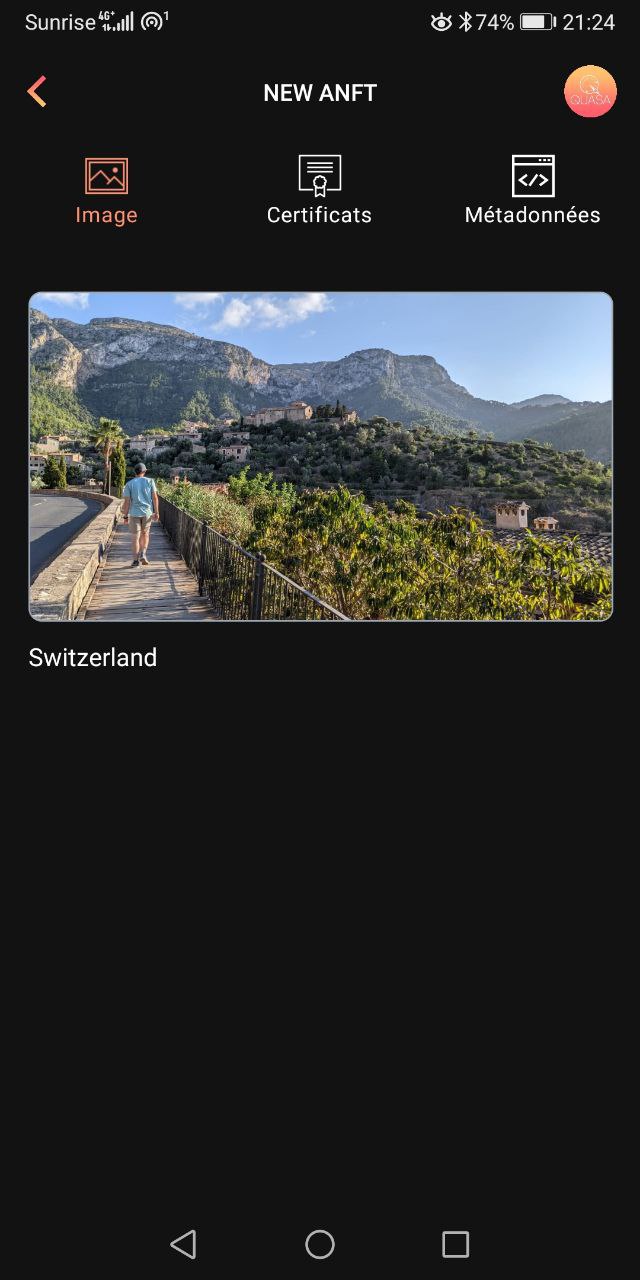Protocol of Certification for a Secure Tokenized Future
A revolutionary protocol based on a new and decentralized consensus algorithm that issues certificates of authenticity for ANFTs & tokenized assets to secure the Web3 ecosystem.
Each certified asset is marked with a checkmark (QUASA), which is a symbol of trust and value.
 QUASA aim to become the reference of trust of the decentralized ecosystem to preserve the tokenized assets market integrity and drive its liquidity.
QUASA aim to become the reference of trust of the decentralized ecosystem to preserve the tokenized assets market integrity and drive its liquidity.
The Web 3 infrastructure protocol, QUASA, which aims to certify the authenticity of ANFT and tokenized assets, announced the development, including a community-driven core protocol that verifies and ‘checkmark’ tokenized assets by giving them a provable mark of authenticity.
Additionally, the ‘checkmark’ will help NFT marketplaces, buyers and sellers distinguish authentic assets from any counterfeits or duplicated assets on multiple platforms, adding to the trust of blockchain asset transfers.
Once the certificate is issued, the newly certified asset will display a tick mark (QUASA![]() ) which will be a symbol of trust and value among the community. Like a Twitter blue tick, it lets users know things are genuine and safe to interact with.
) which will be a symbol of trust and value among the community. Like a Twitter blue tick, it lets users know things are genuine and safe to interact with.
Purposes
- It allows users to buy genuine NFT’s and to be sure that they possess the rights for the asset.
- It gives the opportunity to creators/artists to secure their property by having their artwork certified.
- It helps NFT’s marketplaces to get rid of scams.
Stay Vigilant
As non-fungible tokens (NFTs) take the world by storm, a raft of bad actors follow closely behind, looking to pounce on inexperienced investors and new users. The problem has become so bad that plagiarized works, fake collections, and spam makes up about 80% of all NFTs.
It’s becoming more dangerous to purchase NFTs without conducting high-level research to discover their origins, which is arguably not in sight for most NFT admirers. The downside is that original collections and the broader NFT industry can become devalued if a lack of confidence about the authenticity of various NFT collections stays.
There are numerous ways to stay safe while trading NFTs, and while some require knowledge of the blockchain and its inner workings, others are simpler. The first thing to do when researching an NFT is to use a search engine like Google and type in the name of the NFT collection.
If the project founders are named, search for them online and see if anything pops up about their history. If you see something that looks like a scam, it’s worth researching. On the other hand, if you see news articles, blog posts, videos, or anything similar, that say the collection is fraudulent, maybe it’s best to stay away.
The second straightforward way to conduct some research is to utilize social media. Search for a collection’s Twitter page. If they don’t have one, it’s probably fraudulent. If they have a newly created one, it could be a scam. It can also be a bad sign if an NFT collection appears successful but doesn’t have many Twitter followers. Additionally, the collection could be a scam if they don’t have a Discord channel.
Reddit is where the people of the internet discuss things and Web3 platforms and assets are hot topics across many threads on the forum. So if you want to find out about an NFT collection before you dive in, check what people on Reddit are saying.
Finally, a more complex but solid route to unearth the authenticity of an NFT is by using block explorers, like Etherescan. Anyone can use these websites to find real-time and past information about the activity happening on-chain. They show data related to confirmed blocks, transactions, wallet addresses, and current holdings.
However, you have to know what to look for.
Any Easier Options?
While block explorers and the above present ways for users to manually protect themselves, they can also be used incorrectly or not. Block explorers are certainly not a place for new users and take time to navigate successfully. However, these issues can be solved by platforms laboring to deliver new ways of working to provide users with tools to make NFT research more accessible.
By becoming the decentralized certification authority, QUASA want to promote public confidence in tokenization to drive mass adoption and, as a result, strengthen opportunities, investments, and innovation across the industry.
You just see the QUASA ‘checkmark’ and you don't need to check anything else!






